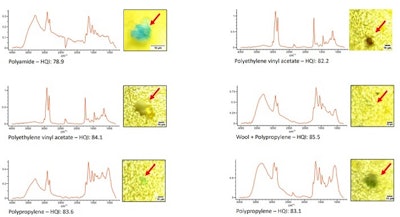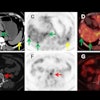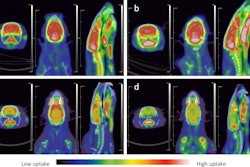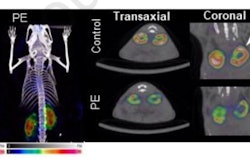Pathologists have detected microplastics in olfactory bulb brain tissues of eight deceased individuals in Sao Paulo, Brazil, and suggest MRI could be the next step for studying the effects of the pollutants on human health, according to a study published September 16 in JAMA Network Open.
Polypropylene – a thermoplastic polymer used in a wide range of plastic packaging – was the most prevalent, noted lead author Luis Fernando Amato-Lourenco, PhD, of Freie Universität Berlin in Germany, and colleagues.
“The presence of microplastics in the human olfactory bulb suggests the olfactory pathway as a potential entry route for microplastics into the brain, highlighting the need for further research on their neurotoxic effects and implications for human health,” the researchers wrote.
While microplastics (MPs) have been detected in the lungs, large and small intestines, liver, placenta, semen, and bloodstream, there have been no published studies to date reporting their presence in the human brain, according to the group. Given the ubiquitous presence of MPs in the air and their previous identification in the human nasal cavity, however, they hypothesized that the smallest-size fraction of MPs could reach the olfactory bulb.
To test the hypothesis, the researchers obtained olfactory bulb tissues from 15 deceased individuals (median age, 69.5; 12 men, 3 women) who had undergone routine coroner autopsies in Sao Paulo. All individuals had been residents of the city for more than five years and held various jobs, from tinker and cook to mechanic, bricklayer, and cleaner. None of the individuals had died from neurological disease.
The researchers examined the samples using micro-Fourier transform infrared (FTIR) spectroscopy and identified a total of 16 synthetic polymer particles and fibers, with 75% being particles and 25% being fibers. The most common polymer detected was polypropylene (43.8%). Sizes of MPs ranged from 5.5 μm to 26.4 μm for particles, and the mean fiber length was 21.4 μm.
 Microphotographs and µFTIR spectra of the microplastics found in the olfactory bulb.Image available for republishing under Creative Commons license (CC BY 4.0 DEED, Attribution 4.0 International) and courtesy of JAMA Network Open.
Microphotographs and µFTIR spectra of the microplastics found in the olfactory bulb.Image available for republishing under Creative Commons license (CC BY 4.0 DEED, Attribution 4.0 International) and courtesy of JAMA Network Open.
In addition, a comparison with the reference spectral library of plastic materials suggested the identified MP particles and fibers exhibited indications of weathering, the researchers noted.
“To our knowledge, this is the first study in which the presence of MPs in the human brain was identified and characterized using μFTIR,” the group wrote.
Ultimately, this was a case series, yet the findings underscore the need for further research on the health implications of MP exposure, particularly concerning neurotoxicity and the potential for MPs to bypass the blood-brain barrier, the group suggested.
“Noninvasive imaging technologies, such as magnetic resonance imaging, are needed to overcome the current limitations in tissue analysis of different human organs and to improve the understanding of the health hazards of MPs,” the researchers concluded.
The full study is available here.



















